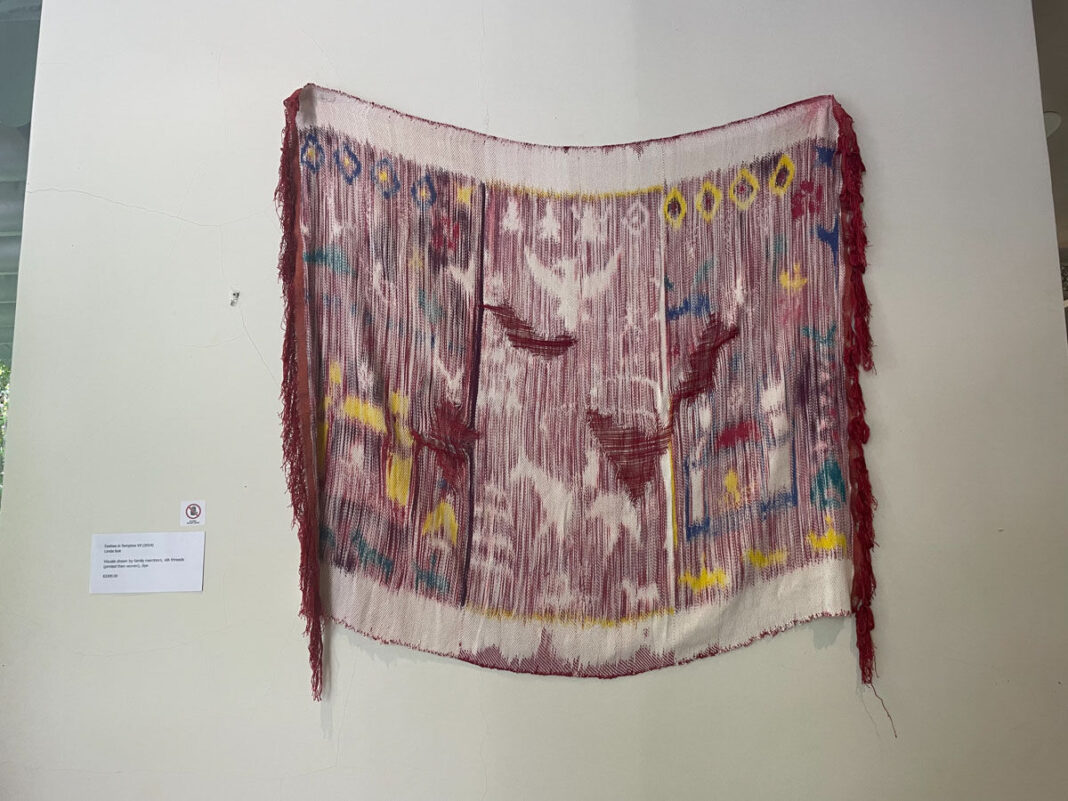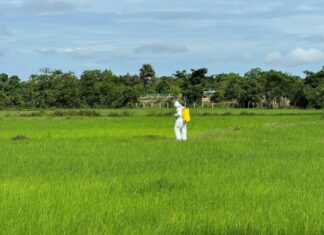Sok Linda discovered the ancient Cambodian art of pidan nearly by accident. Or maybe, you could say, the Angkorean-era silk-weaving tradition found her.
There were no Cambodian museums or art galleries in Sydney, where she grew up, and Khmer art was rarely discussed in her family — and even then, only by the elders.
“As a young person, I didn’t feel like it was that important because it was the older generation telling me that this is Khmer culture,” she said. “But in reality, Khmer culture is very big and multifaceted.”
It wasn’t until she began researching Cambodian weaving styles in university that she discovered pidan and began exploring her own Cambodian heritage.
“I never went to a museum or anything to see art, because it just wasn’t something that my family did,” she said. “So when I went to university, I was like, wow, this is so amazing. I saw it as an opportunity, because I didn’t see a lot of Khmer artists.”
Now 31, Sok Linda is living in the northeastern United States and preparing for a solo exhibit in March at the Campbelltown Arts Center in Sydney. With each new show, pidan gains a few more fans, and Sok Linda moves one step closer to her goal of becoming a full-time artist.
Ancient Heritage
The exact origins of pidan are unknown, but the artform is at least 1,000 years old. It’s defined by the use of intricate dyeing and weaving methods to create finely detailed scenes. Pidan are typically made from fine silk and depict landscapes of Angkor Wat or tales from Buddhist scripture. They were traditionally woven by women and donated to local temples as a way to make merit.
The practice fell into decline during the French protectorate, in the mid 19th century. It was all but obliterated under the Khmer Rouge.
“I was very interested in the idea that silk is something that was almost erased during the Pol Pot times,” she said. “Silk is one of the most resilient materials, one of the most resilient natural fibers.”
It makes an apt symbol for the resilience and strength of the Khmer people.
Modern Spin
Sok Linda first began pidan weaving in 2022. Her take on the ancient tradition reflects the change in times. She has simplified some of the more complex weaving and dyeing techniques, and moved away from its religious origins.
“The colors also differ,” she said, “and the stories behind the pidan are also very different. Instead of Buddhist stories, they are stories from my family.”
Despite the challenges of being an artist – the inconsistent paydays, the long hours, the formal rejection letters – she can think of no better career.
“I want to continue making art, and hopefully make bigger and better things, and get bigger exhibitions,” she said. “It’s a challenging but incredibly rewarding career to pursue. It’s not always stable, but that’s part of the excitement.”












